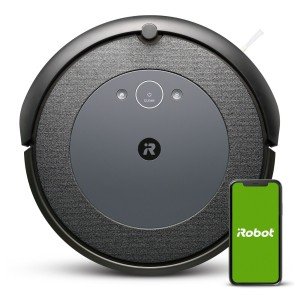11 “Faux Pas” You're Actually Able To Make With Your Cleaning Robots
Revolutionizing Home Maintenance: The Rise of Cleaning Robots
In an age where technology continues to influence daily life, cleaning robots have actually emerged as a considerable innovation in the field of domestic cleaning. These autonomously functioning machines have actually redefined how families handle cleaning jobs, providing benefit and effectiveness. With their ability to browse spaces, prevent barriers, and operate on pre-set schedules, cleaning robots are becoming vital tools for house owners wanting to optimize both their time and their living environment.
The Evolution of Cleaning Robots
Cleaning robots have gone through an incredible transformation given that their creation. What started as basic makers has progressed into advanced gadgets equipped with advanced features. Below is a table highlighting some key milestones in the development of cleaning robots.
Year
Turning point
Description
1996
First Commercial Robot
The very first robotic vacuum, Electrolux's Trilobite, was presented.
2002
Roomba Launch
iRobot released the Roomba, making robotic vacuum popular.
2004
Mapping Technology Introduced
iRobot presented smarter navigation capabilities, permitting much better cleaning courses.
2012
Smart device Integration
The intro of mobile app control enabled users to control robots from another location.
2020
Advanced Sensors & & AI
Robots began using AI for enhanced mapping and item acknowledgment.
Types of Cleaning Robots
As innovation has actually advanced, numerous types of cleaning robots have surfaced, each created to cater to various cleaning needs. A few of these consist of:
Robotic Vacuums
- Developed to autonomously vacuum floorings, they often include sensing units to navigate around rooms and return to their charging stations.
Robotic Mops
- These robots are equipped with mopping performance, utilizing water or cleaning solutions to scrub floors.
Window Cleaning Robots
- Specifically crafted for window cleaning, these devices can climb up vertical surface areas using suction or magnetic systems.
Swimming Pool Cleaning Robots
- Developed for in-ground pools, these robots collect debris and even scrub the walls of the swimming pool efficiently.
Multi-tasking Robots
- Some modern-day cleaning robots combine vacuuming and mopping capabilities, using flexible cleaning options.
How Cleaning Robots Work
The core functionality of cleaning robots is centered around their ability to navigate homes autonomously while performing cleaning jobs. Here's a breakdown of the basic components that enable them to carry out efficiently:
Sensors: Most cleaning robots are geared up with sensing units that help them identify obstacles, slopes, and edges, avoiding falls and collisions.
Navigation Technology: Many robots use a mix of gyroscopes, accelerometers, and often cams or LIDAR for navigation. This allows them to map their environment and tidy effectively without missing out on areas.
Source of power: Most cleaning robots run on rechargeable batteries, with lots of efficient in going back to their charging docks when their power runs low.
Cleaning Mechanisms: Whether through suction for vacuuming or turning brushes for mopping, cleaning robots feature various systems tailored for reliable dirt elimination.
Benefits of Cleaning Robots
The incorporation of cleaning robots in homes provides numerous advantages:
Time-Saving: Cleaning robots can operate on their own, allowing homeowners to participate in other activities.
Consistent Cleaning: With arranged cleaning times, these robots ensure constant maintenance of the home.
Hard-to-Reach Areas: Cleaning robots can access narrow areas and corners that standard cleaning tools might fight with.
Lowered Allergens: Regular cleaning assists lessen dust and irritants, contributing to a much healthier living environment.
Limitations of Cleaning Robots
In spite of their numerous advantages, cleaning robots also present specific limitations that users need to think about:
High Initial Cost: While the price of cleaning robots has decreased in time, some sophisticated designs can be fairly pricey.
Inconsistent Performance: Not all robots carry out similarly; some may have problem with particular surfaces or dirt types, causing unsatisfactory results.
Limited Capacity: Many robotic vacuums have smaller dustbin capacities, requiring more frequent emptying than conventional vacuum.
FAQs about Cleaning Robots
Q: Are cleaning robots worth the investment?A: Cleaning robots can be
a rewarding investment for those looking for time-saving solutions. They can significantly ease the cleaning burden, especially for hectic households. Q: Can cleaning robots be programmed?A: Yes, lots of cleaning robots feature programmable schedules and modes, allowing users to set particular cleaning times and areas. Q: How do I preserve my cleaning robot?A: Regular maintenance involves cleaning the brushes, emptying the dustbin, and periodically inspecting for software updates. sneak a peek at this website : Are cleaning robots efficient on all surfaces?A: Most robotic vacuums work on difficult floors and low-pile carpets. Nevertheless, efficiency might
vary on thick carpets or particular types of carpets. Q: Do cleaning robots work well under furniture?A: Cleaning robots are developed to fit under a lot of furnishings; however, the effectiveness can depend upon the height of the furnishings.
**Cleaning robots represent a development in the world of
domestic chores, using a mix of technology, convenience, and efficiency. While they are not a total replacement for standard
cleaning approaches, they considerably improve housekeeping capabilities. As advancements continue, future iterations of these devices are expected to end up being a lot more intelligent, efficient, and easy to use, more incorporating into the smart homes of tomorrow. The modern property owner therefore deals with an exciting future where cleaning robots could take much of the drudgery out of home maintenance, enabling a cleaner home with minimal effort.  **
**